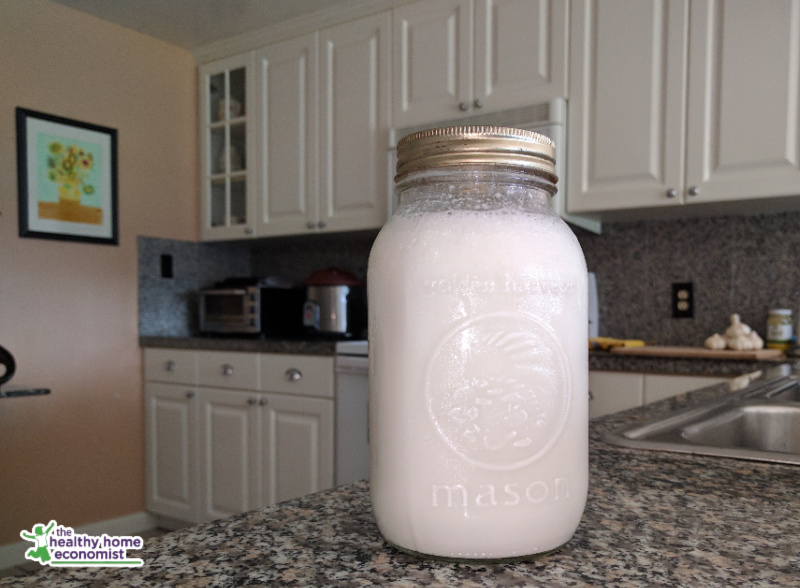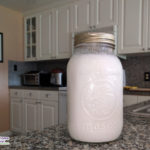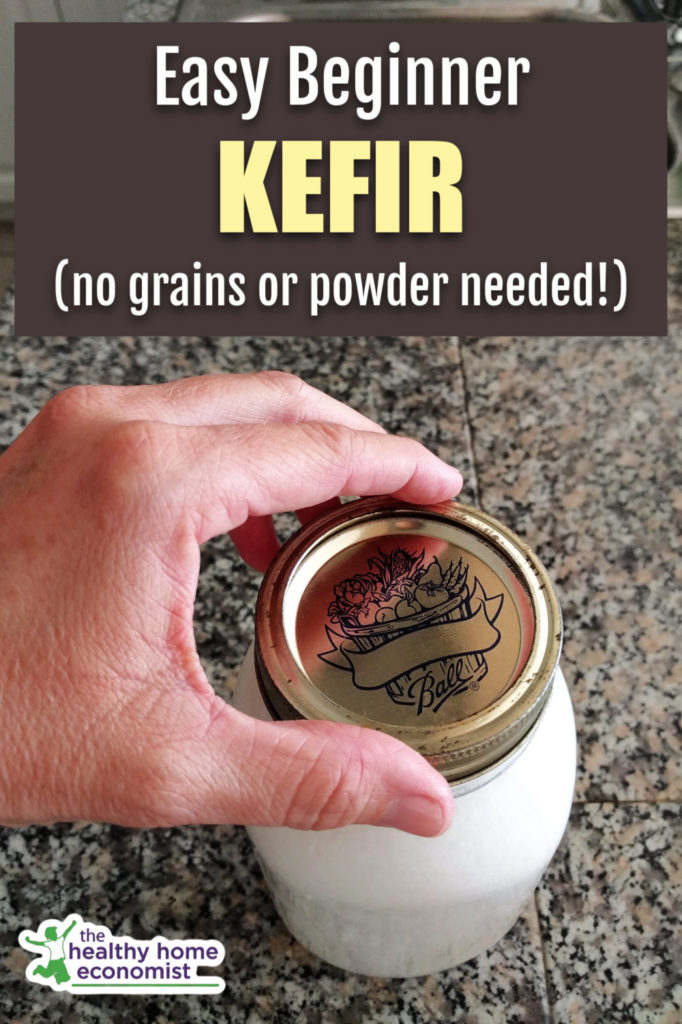How to make a batch of whole milk dairy kefir using plain full fat store brands as the starter.

Daily consumption of a cup or two of homemade whole milk kefir is an excellent strategy for maintaining gut health.
While the most potent kefir starter is live grains, what if you don’t have the budget to buy some and no one in your community to give you extras?
In that case, I suggest using store kefir as an easy inoculant to make a batch of beginner kefir. This way, you can try it without any additional cost and compare the probiotic benefits of kefir to yogurt.
Kefir made this way will have about the same number of probiotic strains as powdered kefir starter. While less than kefir made with live grains, it will far more potent than commercial brands because you will be fermenting it for 36 hours. Store versions are typically only fermented for a few hours or less, which results in far less potency.
Normally, kefir made with live grains is ready in only 24 hours. Fermenting kefir for 36 hours when commercial kefir is used as the starter compensates for the weakness of the store brands (even if organic) compared to the live grains.
Making kefir is far easier than other types of cultured milk because you simply leave it on the counter. No heating or use of appliances is necessary.
If you’ve never experienced the digestive benefits of kefir before, try this simple method below for yourself!
Once you’ve made your first batch of beginner kefir, save some to use your starter for new batches going forward.
The recipe below features a one-minute video demonstration of the process as well.

Easy Beginner Kefir
How to make a batch of whole milk dairy kefir using plain full fat store brands as the starter.
Ingredients
- 3 cups whole, nonhomogenized milk preferably grassfed (raw or cream top low-temp pasteurized)
- .5 cup whole milk store kefir plain
Instructions
-
Mix whole milk and commercial kefir in a one-quart mason jar.
-
Affix the lid and leave on the counter for 36 hours.
-
Refrigerate. Kefir will remain fresh to consume for several weeks.
Recipe Video
Recipe Notes
Goat or cow milk may be used for this recipe.









I would like to know how to actually grow the grains and not ‘get them from someone else’. I’ve searched online only to read that it is ‘impossible’ to make your own. That is ridiculous to me. Saying that, I cannot find the information anywhere online yet on how to make the live grains. Websites continually copy other sites. However, your note at the bottom of this page implies you have the answer to that (easy Beginner Kefir), but we have to pay to get it.
1) can you confirm your paywalled recipe is in fact the directions to make milk kefir without adding someone else’s culture, powder or grains? 2) if confirmed, can you provide me information as to your source of this recipe? It is the only thing I would like at this time. Or do I have to pay $60 for the whole ‘membership’? OR Can I purchase it on its own as a PDF?
Thank you
Hi there, yes…that post is a recipe for cultivating your own kefir grains from scratch. Best regards, Jenn (comment moderator)
Can we cut the recipe I n half if needed?
I think making a smaller amount would risk that the fermentation would not “take”.
I made this with heavy cream! It’s Divine! Is there a problem with cream instead of milk?
You can do half cream and half milk … but if you do all cream it doesn’t quite turn out in my experience. You need the carbs in the whey in the milk to feed the good microbes. There is hardly any whey in cream.
I’m going to try this! Will having cell salts in the milk affect how the kefir turns out? I like adding Calc fluor and calc phos to our gallon of raw milk.
Hi Sarah,
Will this work with raw kefir?
Yes it should!
It’s usually finished when the whey and curd are separated.